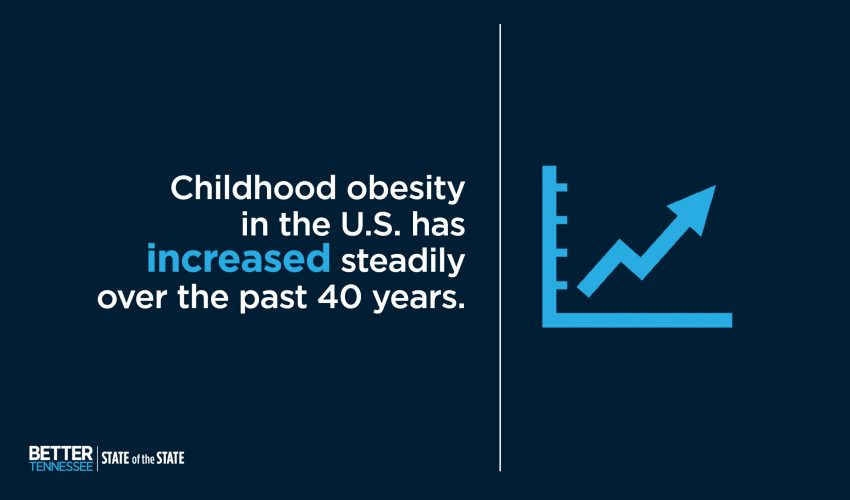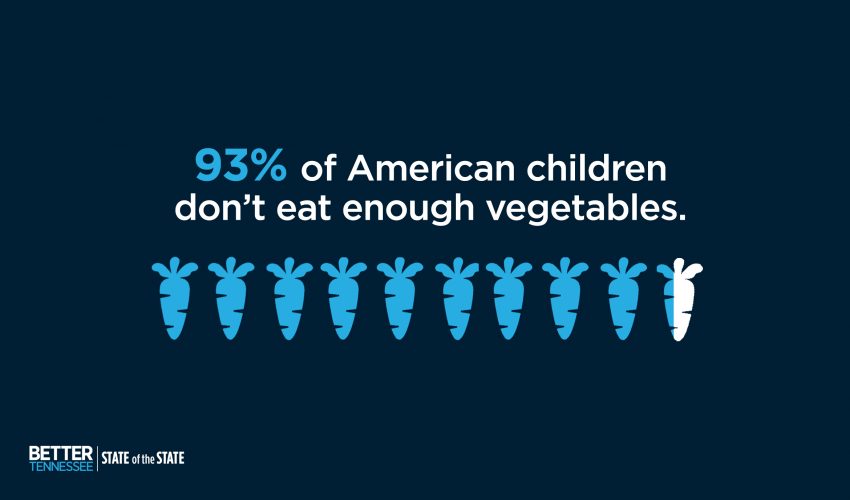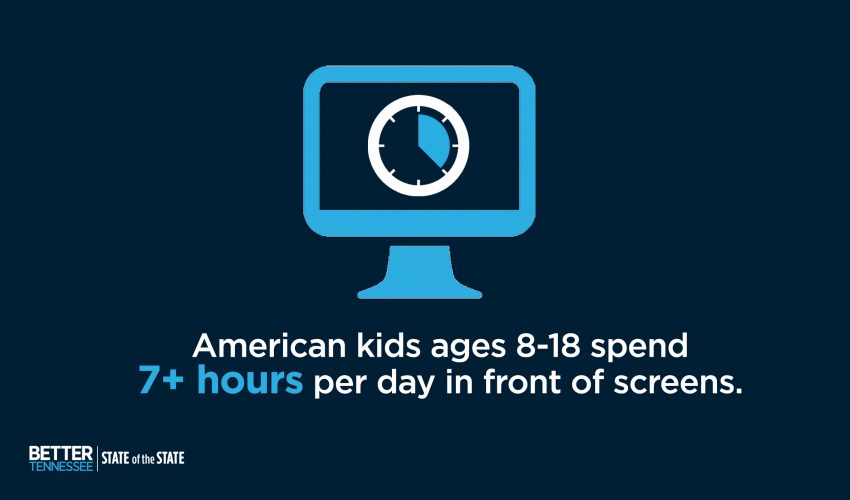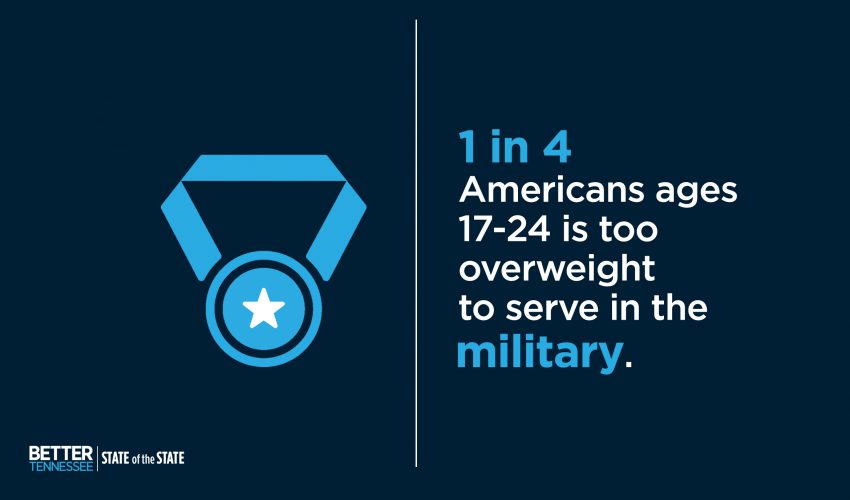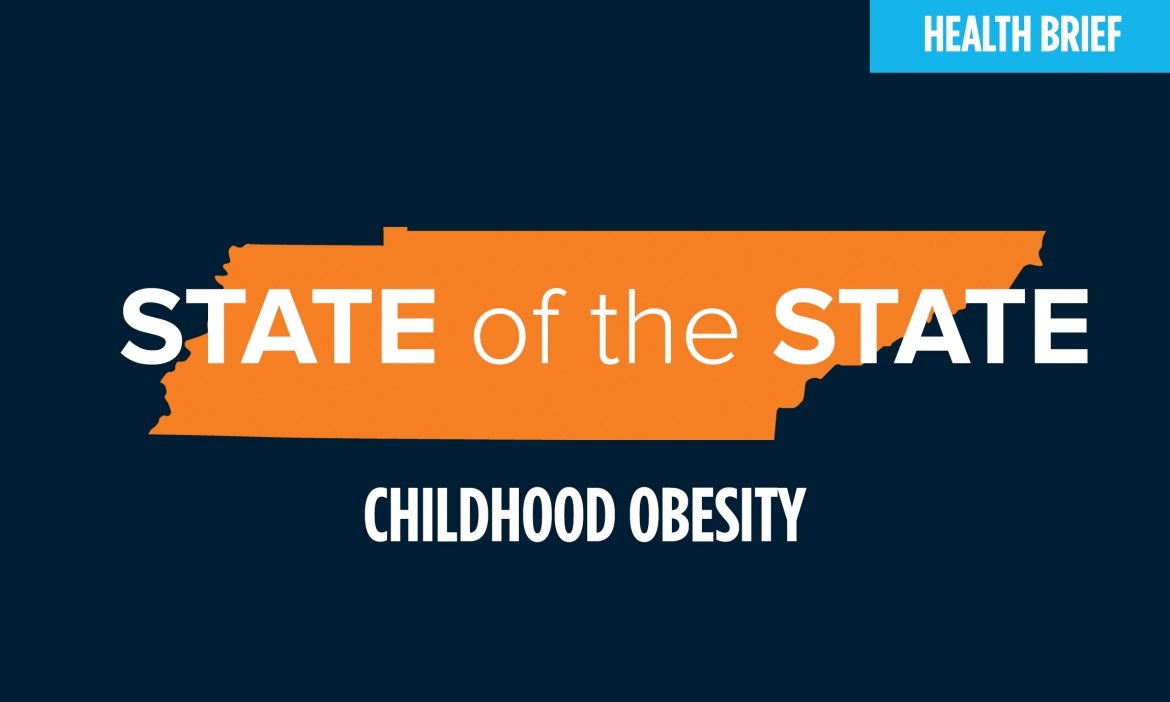Updated June 20, 2017
Health briefs offer quick but comprehensive information about some of the biggest health challenges Tennessee is facing.
Scroll down to read all about childhood obesity in our state or jump to a specific section:
Childhood obesity has increased steadily in the past 40 years in the U.S.
Health professionals consider the current situation an epidemic with long-term health consequences for these children as they get older.
For example:
- Obese children can develop heart disease as early as age 25.
- Obese children are twice as likely to die before age 55 as their non-obese classmates.
Tennessee consistently ranks as one of the states with the highest rate of childhood obesity.
- 38.5% of Tennessee students are overweight or obese.
- Tennessee is one of only three states where preschool-age obesity is increasing rather than decreasing.
- Teenage obesity has risen more than 30% from 2001 to 2015 according to the 2017 BCBS Health Index Report.
- Growing rates of obesity among adults 18-24 suggest that this growth will continue for adults 18-34 going forward.
How do you define childhood obesity?
The Centers for Disease Control and Prevention uses Body Mass Index (BMI) to determine overweight and obesity.
- BMI for children takes into account the body composition variations during growth, using the measure in relation to others of the same age and sex.
- It is used for people ages 2-19.
Overweight: BMI greater than the BMI of 85-94% of children/teens of the same age and sex.
Obese: BMI greater than the BMI of more than 95% of children/teens of the same age and sex.
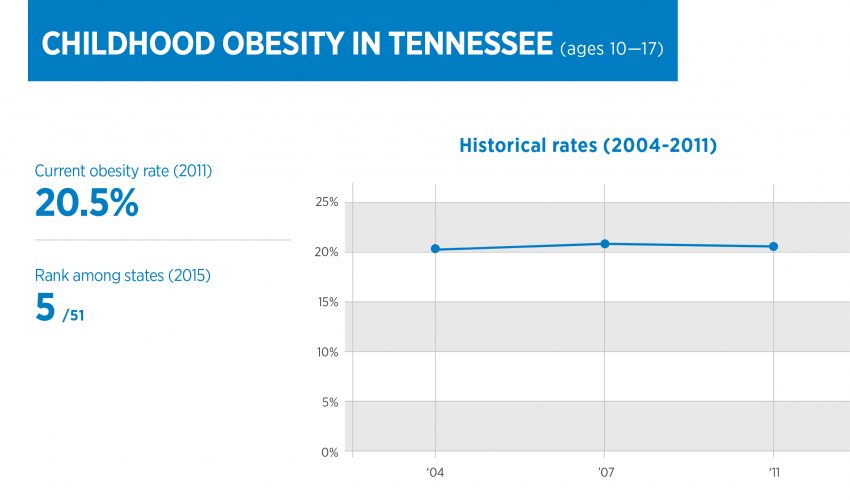
What causes childhood obesity?
Today, most people travel by car, eat food that’s higher in fat and sugar, and children’s play often involves video games or screen-based activities.
So by default, kids tend to eat more and move less than previous generations.
What dietary habits lead to obesity?
- A high-calorie diet
- Heavy on sugar and processed foods
- With too few fruits and vegetables leads to weight gain,
- Especially when paired with sedentary habits.
Where do the calories come from?
40% of calories for U.S. kids under 18 come from added sugars and solid fats (foods that are solid at room temperature such as butter).
1/2 of those empty calories come from soda, fruit drinks, desserts, pizza and whole milk.
- 41% of Tennessee adolescents drink at least 1 soda per day. Experts recommend 1 per week.
- 93% of American children under 18 do not eat the daily recommended amount of vegetables.
- French fries and chips (white potatoes) make up 1/3 of the vegetables that children eat.
How active are kids today?
The CDC recommends 60 minutes of physical activity every day and vigorous activity 3 days/week.
- 74% of Tennessee high school students are active for less than 1 hour per day
- 18%of Tennessee high school students are active for less than 1 hour per week
What is the long-term impact of childhood obesity?
80% of children who are overweight at ages 10-15 grow up to be obese adults.More than 25% of 17-24 year olds in the U.S. are too overweight to serve in the military.
What are children and adolescents who are obese at greater risk for?
- Cancer (breast, colon, endometrial)
- Gallbladder disease
- Gynecological problems
- Heart and liver disease
- Hypertension
- Osteoarthritis
- Sleep apnea
- Stroke
- Type 2 diabetes
How prevalent is childhood diabetes?
Type 2 diabetes was once so rare in children that it was known as adult-onset diabetes.
Between 2000 and 2009, as childhood obesity rates rose, the rate of kids with type 2 diabetes increased by 21%.
1/3 of the children born in 2000 or later in the U.S. are expected to develop type 2 diabetes in their lifetime.
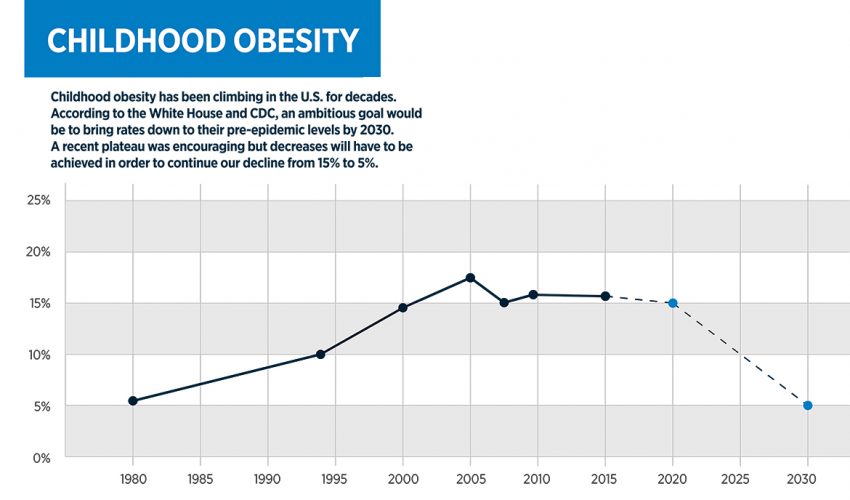
From the White House Task Force on Childhood Obesity Report to the President (2010) via the CDC.
How can you prevent or decrease childhood obesity?
At school
American children spend 6+ hours a day at school, which makes it a crucial place to instill healthy behaviors.
What are the requirements for physical activity in Tennessee?
- Elementary school:
- 130 minutes of physical activity per week PLUS
- 1 active period per day of at least 15 minutes
- Middle and high school:
- 90 minutes of physical activity per week
- Students must have 1/2 credit of physical education to graduate

What programs are available to boost activity in Tennessee schools?
SPARK, a research-based program for physical activity and nutrition education, has proven effective in combatting childhood obesity. It has been recognized by the Surgeon General, the U.S. Department of Education, the Centers for Disease Control and Prevention and the National Academy of Sciences.
- The BlueCross BlueShield Health Foundation gave $1.2 million to implement SPARK at 120 schools through the Shape the State initiative.
GoNoodle gives teachers a structure for including short activity breaks for students so they don’t spend hours at a time sitting at their desks.
- The BlueCross BlueShield Health Foundation gave $3 million to provide free access to GoNoodle for all elementary schools in Tennessee.
Since 2006, the Tennessee Department of Education’s Office of Coordinated School Health works with all school districts to improve student health and prevent obesity.
In the community
Parents who increase their activity level and eat healthier have kids who do the same.
Increasing access to healthier foods and opportunities for activity gives families the tools they need to adopt healthier behaviors.

What programs are available to boost activity in Tennessee communities?
Healthier Tennessee offers support to local communities that are actively working toward encouraging residents to stop smoking, get active and eat healthier. It has designated 16 counties or cities as Healthy Tennessee Communities as of February 2016, with 30 more in progress.
- The BlueCross BlueShield Health Foundation gave Healthier Tennessee $3 million to improve Tennesseans’ health.
KaBOOM! is a national nonprofit that promotes the importance of play for growing children in underserved areas. It works with communities to design and build customized playgrounds.
- The BlueCross BlueShield Health Foundation has provided more than $600,000 to build 10+ playgrounds across Tennessee.
INFOGRAPHICS
